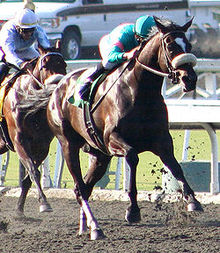What do Seabiscuit, Man O'War, Secretariat and Seattle Slew all have in common? According to research done by an international scientific team, they share a distant genetic connection.
Researchers are now claiming that all the best thoroughbreds of horse racing are very distantly related after tracing the 'speed gene' they all share to a single ancestor from the 17th century.

Speed traced to gene
Researchers are now claiming that all the best thoroughbreds of horse racing are very distantly related after tracing the 'speed gene' they all share to a single ancestor.
Experts at University College Dublin analysed DNA from nearly 600 horses and 22 modern breeds, and were able to predict what the horses had in common genetically
By analysing horse DNA, they traced the 'speed gene' back to a single British mare in the 17th century at a time when local British breeds were pre-eminent in racing horses and before the foundation of the thoroughbred racehorse.
Their results showed how the 'speed gene' which saw racing greats like Man O'War and Seabiscuit power to victory was passed to the famous horses from a single founder, a British mare around 300 years ago.
The international scientific team led by scientists from University College Dublin (UCD), Equinome Ltd and the University of Cambridge, have traced all modern variants of the original 'speed gene' to the legendary Nearctic (1954-1973), and attribute the wider expansion of these variants to Northern Dancer (1961-1990), the son of Nearctic, and one of the most influential stallions of modern times
